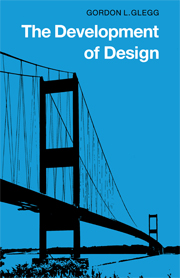Summary
So far in this book we have assumed the existence of a main invention, with or without attendant mini-inventions, and have discussed how to develop it. But life is not always as simple as that; perhaps you would prefer me to say it is even more complicated than that. The main complication arises when you are faced with not one but a variety of proposed solutions, a crowd (sometimes two is a crowd) of rival inventions, each clamouring for your patronage. Unless you are a Government anxious to produce an atom bomb in a hurry you are unlikely to have the money to back all the options simultaneously. How then do you select which to choose, which to gamble your money upon? Before considering a specific example of this kind of choice we must clarify the basis on which it is to be made. In round terms, and as already discussed, the selection must be made on a personal assessment of the internal and external compatibility of the main inventions and the potential difficulties of their attendant mini-inventions. Added to these should be a highly subjective but often decisive verdict based on a sense of engineering style; the artistry of design. I have written about this elsewhere (The Design of Design, p. 20) as follows ‘The sense of the artistry of engineering is invaluable but cannot be formally stated. A machine may look artistic in the normal meaning of that word without being good engineering.
- Type
- Chapter
- Information
- The Development of Design , pp. 63 - 71Publisher: Cambridge University PressPrint publication year: 1981

